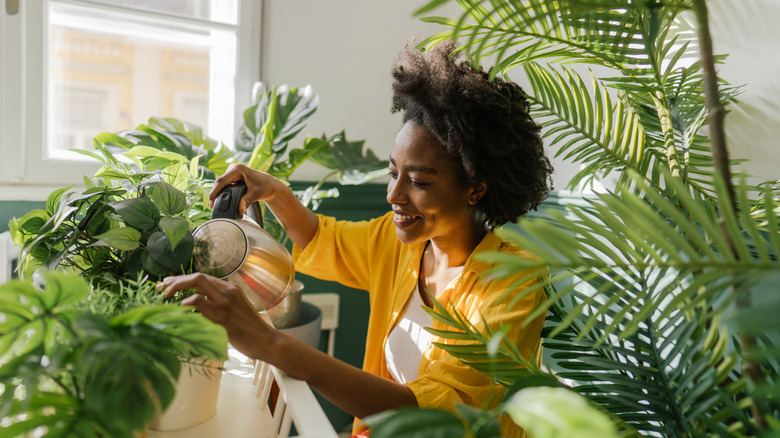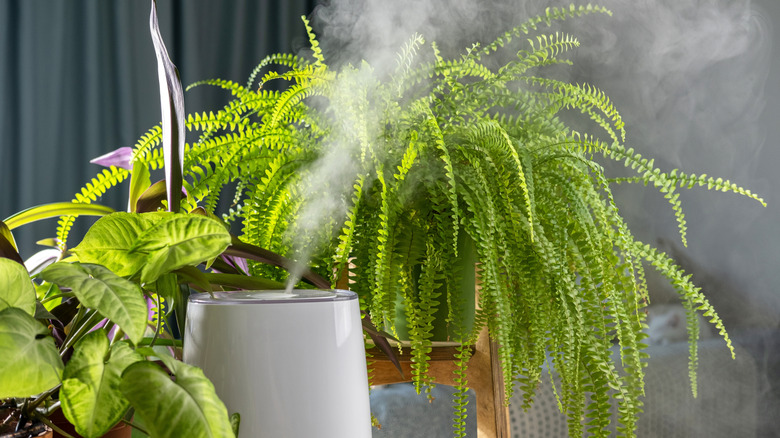The Native Environment Your Houseplants Thrives In (And How To Replicate It At Home)
Many of your beloved houseplants don't naturally live in homes with central heating and air conditioning. These plants come from nature, and it is helpful to know their native environment when bringing them inside. Many houseplants are understory plants, and this term refers to the conditions in which they grow. Understory plants come from tropical rainforests, where they live beneath a vast canopy of trees. They thrive in shady, humid places, which means they can be grown in homes where there is little natural sunlight.
Some of the best statement houseplants that are understory plants include pothos, zebra plants, philodendrons, and prayer plants. However, there are so many understory plants that we keep inside, it may be helpful to take a look at houseplants that aren't from this climate. Succulents and cacti are houseplants that need bright light and can really suffer if they are kept in darker locations. To help the houseplants we have flourish, we can work on bringing their natural environment into our houses.
How to look after understory plants in your home
Many indoor plants don't need much sun to survive, which is pretty helpful when you consider how limited your windowsill space is! If you have understory plants in your home, ensure that you are placing them in a sheltered area, out of the way of direct sunlight. They can get sunburnt or scorched when left in full sun. However, light level is just one aspect of the native environment of understory plants that you need to consider when bringing them into your home. Understory plants usually grow in wet and warm environments, and you need to make sure the humidity and heat in your home are suitable, especially during the winter months.
Most tropical plants come from an environment with a relative humidity level of 70 to 90 percent. To replicate their native environment, it is important to take steps to increase humidity for your plants. Firstly, it is great to group your plants together, as this creates a microclimate in your home. Then, you may wish to look into purchasing a portable humidifier or making a pebble tray. For smaller plants, it may be fun to build a terrarium for them. Closed terrariums are easy to create and maintain, and make a very interesting addition to your home.
When it comes to warmth, have a look at the houseplants you have and their preferences. Then, consider the different locations in your home that may suit their needs. Never put your houseplants on or near radiators, as this can lower humidity.

